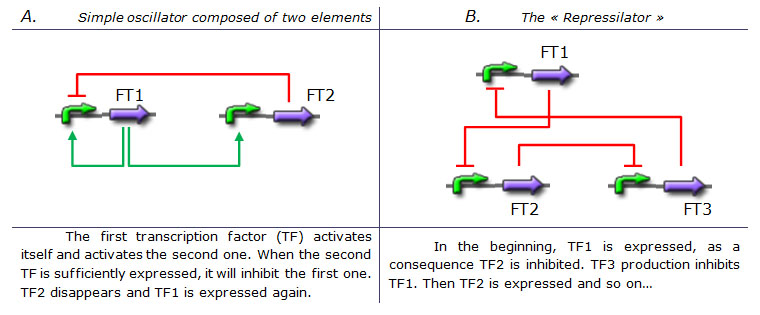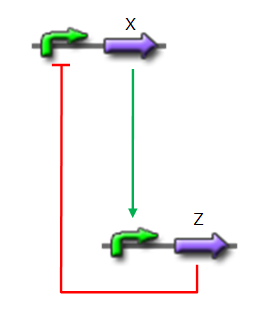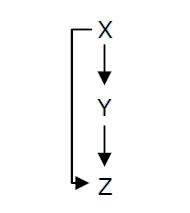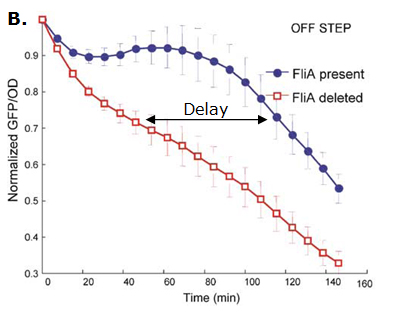Team:Paris/Analysis/Design1
From 2008.igem.org
(→Design of our genetic oscillator : The Feed Forward Loop) |
(→Design of our genetic oscillator : The Feed Forward Loop) |
||
| Line 14: | Line 14: | ||
Uri ALON described genetic network motifs that generate a delay. Those motifs are the type 1 coherent Feed Forward Loop (C1-FFL). | Uri ALON described genetic network motifs that generate a delay. Those motifs are the type 1 coherent Feed Forward Loop (C1-FFL). | ||
| - | {{Paris/Toggle|More on Feed Forward Loop|Paris/FFL}} | + | <center>{{Paris/Toggle|More on Feed Forward Loop|Paris/FFL}}</center> |
We will use one of those network to increase the run of each period and permit more oscillations. | We will use one of those network to increase the run of each period and permit more oscillations. | ||
Revision as of 17:41, 26 October 2008
|
Network Design - Part 1
Creating an oscillatory systemAlready existing genetic oscillators and their limitsDesigning a simple genetic network that presents an oscillatory behavior is one of the first challenge synthetic biology overcame. More or less successfully. We can count more than ten synthetic genetic oscillators that have varied period and mechanisms. Raúl GUANTES and Juan F. POYATOS (2006) studied the most simple oscillators composed of two elements while Michael B. ELOWITZ and Stanislas LEIBLER (2000) designed the more complex "repressilator" (Table 1), to quote only the best known. Both oscillators work : we can observe oscillations but only a limited number of cycles. Actually, they always reach a steady-state because the degradation/dilution rate is often too low : at the end of each cycle, the conditions are not exactly the initial conditions. Experimentally, the longer is the period the more cycles we can observe. Design of our genetic oscillator : The Feed Forward LoopWe want to design a simple oscillator that oscillates during as many cycles as possible. We propose a system based on an oscillator composed of two elements on which we added a delay at the end of each cycle. Uri ALON described genetic network motifs that generate a delay. Those motifs are the type 1 coherent Feed Forward Loop (C1-FFL). ↓ More on Feed Forward Loop ↑
We will use one of those network to increase the run of each period and permit more oscillations. Limits of our network |
 "
"





